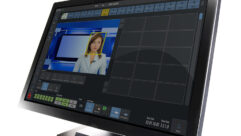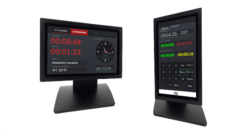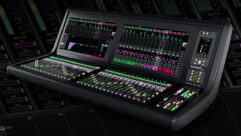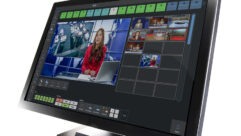How to make it easy: When a control system is really easy to operate, howdid it get that way?
Aug 1, 1997 12:00 PM,
Dave Hill
Ease of use. Customers demand it. Contractors profit from it. Contractorssave money when operator errors are reduced or eliminated. If there’s asecurity system involved, ease of use saves the consumer charges frompolice or fire departments responding to false alarms.
Over the years we’ve all seen easy-to-use control systems. Consider “TheClapper.” Clap on, clap off. It’s a toy, but it has a user-interfaceeveryone just knows how to work. It doesn’t have to be demonstrated twice.Users seldom telephone the clapper company for instructions on how tore-boot.
Consider another device everyone can operate successfully: an elevator. Ithas instruction feedback: press the floor number you want, the buttonilluminates. It has operational feedback: numbers above the door illuminateas the elevator goes from floor to floor. No combination of buttons willever cause the elevator to shoot out the roof of the building like a rocketor drop like a stone to the bottom of the shaft.
By contrast, try to use an analog telephone on a digital telephone system,especially one requiring a page of star-pound codes just to put a call onhold. Today, consumers don’t have time or patience for complicated gizmos.The purpose of automation technology ought to be to make things easier andmore reliable. If a product fails that test, consumers won’t buy it or,after buying it, won’t use it. In that case, they don’t enjoy the controlsystem sitting there mocking them. Don’t ever tell a customer, “It’s easywhen you know how.” They might reply, truthfully, “Brain surgery is easywhen you know how.”
How do the manufacturers and installers of help each other to create idealcomponents that will meet the real needs of end-users and the demand forease of useThere is no simple, immediate way to look at two control systemsand know at once which is easier to use. As an example of how amanufacturer goes about it, I will describe how my company created acontrol system with ease of use uppermost among our goals.
AudioEase is one of the AMX family of companies. We recently introduced asystem designed to overcome the burden of complex control and distributionof audio and video signals in home and commercial installations. Inaddition to the control of entertainment components, the system design hadas a goal the ability to interface to other popular subsystems. These mightinclude lighting from LiteTouch, Lutron or Vantage; comfort control usingthe Enterzone, RCS or Zencom thermostat networks; whole-site caller ID;even curbside weather using components from Davis Instruments. We workedlonger than two years on our Monaco NT to make it easy for consumers touse. We wanted to bring all those features to the client’s fingertipseither on any television set in the house or over a Windows network clientsoftware package. We wanted it to be as easy to use as The Clapper or anelevator.
It would be harder to do than we thought.
At the beginning of the project, our company’s staff, especially theengineering and marketing people, came up with what they thought would bethe best thing since sliced bread. Product features were tossed around, andalmost every way any task could be accomplished was incorporated into theproduct concept. Then the engineers actually built one. It worked in thelab. Now the real fun began.
AudioEase built seven prototype Monaco NT systems early in 1995 andinstalled them in real houses, lived in by real people. Some of these wereAudioEase employees, others were not. Nobody expected any major changesbecause this was an evolution from earlier, successful Monaco products.
The real people in those real houses found our niftiest softwareenhancements to be cumbersome and awkward. Some combinations of commandslet Bach play in the living room and rock music in the bedroom; other roomsgot Bach-rock. One tester wanted the network software to control all roomsand system features over the Internet. The gray color of the prototype wascriticized. We worked on it as we went along: replace an EPROM here andthere, rewrite some software, try new paints and finishes, test, test, test.
Six months passed. It was September 1996. Certain that the new system was aready-for-prime-time player, our sales staff presented the unit to acouncil of dealers. We were in for a revelation.
The hand-held remote control design was a hit, but why on earth did we puta button there where it can be touched accidentally, and why that button,which will affect the entire system. Functional is OK, but why can’t thecosmetics be souped up to create a new look?
After an exhausting day with our dealer council, we were left with atwo-page list of things yet to do. These were the best dealers around, andthey weren’t just picking on flaws, they were providing lifetimes of realexperience at how products can go wrong. We went back to the drawingboards. An outside design firm reworked the look of the product while weconverted the dealers’ suggestions into a functional product.
By now the original prototype systems had been used in the field for morethan a year. Our dealer network had refined the product even more. Word wasleaking out, and other dealers wanted to know when the product would bedelivered and how much it would cost. The pressure to deliver a knock-outproduct was mounting.
AudioEase began the first pre-production run and began taking the firstorders without a firm price being established. Pre-production units servethree purposes. They help work out the details of actual manufacture on theline. They provide samples for trade shows and sales calls. They also meetearly demands for systems dealers who have already specified the productfor customers. This is called “learning to shave on someone else’s face.”When one of these units got into the field, a contractor discovered thatconnectors wouldn’t fit into all the sockets unless there were an extraunused rack space. There’s always one last detail to sort out. That onecost 60 days to change the connector and do some metal work. A manufacturerhas to take pains over minute details or else the details will be a biggerpain later.
There finally comes a time in a product’s life when it just has to be theway it is. The final meetings resolve details, drafting puts the realnumbers into the drawings, there are as many drawings to sign as papers ata house closing. It is released for manufacture. Our director ofengineering, Jim Hoemann, says it’s like giving birth. Jim makes acommitment to the entire engineering staff to take them to dinner at a finerestaurant when the first unit is shipped to a customer.
Weeks went by. The purchasing department wanted to know if this part couldbe substituted for that part, which would be unavailable when wanted. Themanufacturing manager wanted to know about testing the unit after assembly.By the time Jim and his engineers had their restaurant dinner, they hadbeen drained of every concept they put into the engineering models of theirnew product.
Finally it was June 1997, and the first production units rolled off theline, ready for installation. The world thought the Monaco NT a newproduct; we lived with it for more than two years. Having taken the time toseek constructive opinions, the AudioEase team was rewarded. Users praisedthe ease of one-button control over the world of entertainment andinformation access. Dealers applauded the new look, compact size and easeof installation.
The key elements of designing easy-to-use products are these:
Set up a field trial for users. The users should be as varied as you canmake them: families with little children, families with teenagers, retiredpeople, young singles. Let them work your product hard and find ways tomake it fail you never dreamt of. For control products, it may take sixmonths, it may take a year.
Bring in the key dealers early and let them show you how to avoid problemsthey’ve had with other units.
Have dealers install a few pre-production units while you keep time inreserve to make last changes they suggest.
AudioEase isn’t unique. I know other industry manufacturers regularly testproducts in the field and consult with dealers. I credit JBL, TOA andAiphone with many of the ideas we used for getting consumer input in thedesign process. As complex and versatile as modern components are, we whoprovide hardware must always remember: what the customer wants is clap on,clap off. Thomas Edison said, “Nothing is impossible, we merely yet don’tknow how to do it.” To this I add, “If we ask the people what they want,they will tell us, and how to do it.”










